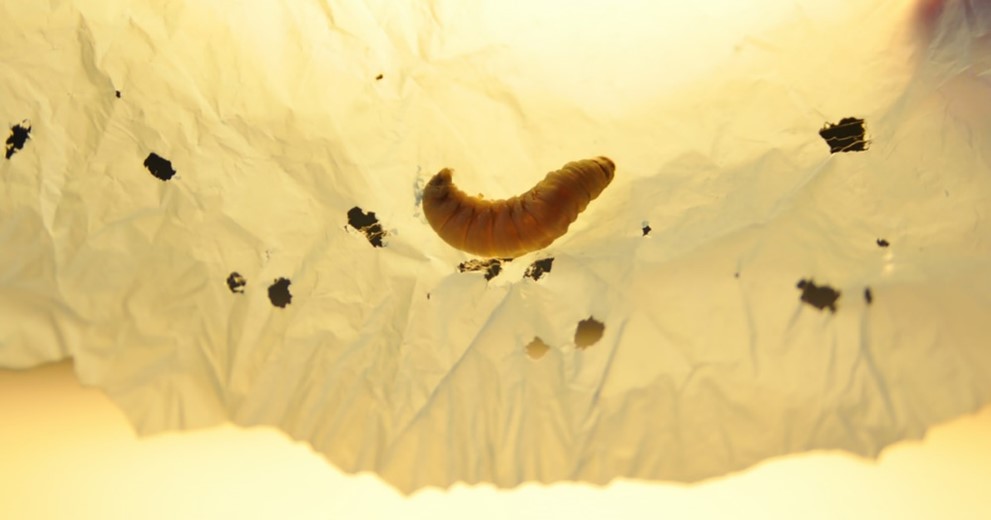Harnessing insect-derived enzymes for plastics bioremediation

G. mellonella larva feeding on plastic (https://www.nbcnews.com/science/environment/plastic-pollution-may-met-match-saliva-wax-worms-rcna50838).
The challenge
Plastics are used in packaging materials, textiles and construction because of their sturdy properties. However, these same properties make plastic highly resistant to both chemical and biological degradation. Current methods for recycling plastics are limited and can result in a product that compromises on quality. The lack of a proper recycling system, in addition to increased virgin plastic production, has resulted in significant plastic pollution, which often leads to microplastics as they break down in the environment.
Our response
An area of research showing increasing promise to address plastic pollution is through the bioremediation of plastics. This technique uses enzymes to catalyse the decomposition of plastic waste, breaking it frown from long chain polymers to shorter monomers. Examples include I. sakaiensis and Acinetobacter spp. which are microorganisms that have been shows to degrade polyethylene terephthalate and low-density polyethylene, respectively. Additionally, insect larvae. such as Galleria mellonella and Tenebrio molitor have also been observed to digest the long chain polymers that comprise plastics into shorter chains and may be capable of mineralising plastics into their corresponding monomers.
This project involves the identification, characterisation, and improvement of enzymes found in two closely related wax moth species – G. mellonella and Achroia grisella. There is evidence that both moth species are capable of feeding on different plastic substrates, making them attractive candidates for bioremediation research. By combining omics techniques, biochemical assays and computational analyses, we are continuing our research in identifying and developing effective enzymes for plastic degradation.
The result
Currently, polyethylene is the most highly produced form of plastic. By developing optimised enzymes, we are aiming to use this technology to break down consumer grade plastics. By transferring the gene codes in these enzymes to other organisms, such as the black soldier fly, there is potential to leverage this research further to more efficiently process plastic waste.

